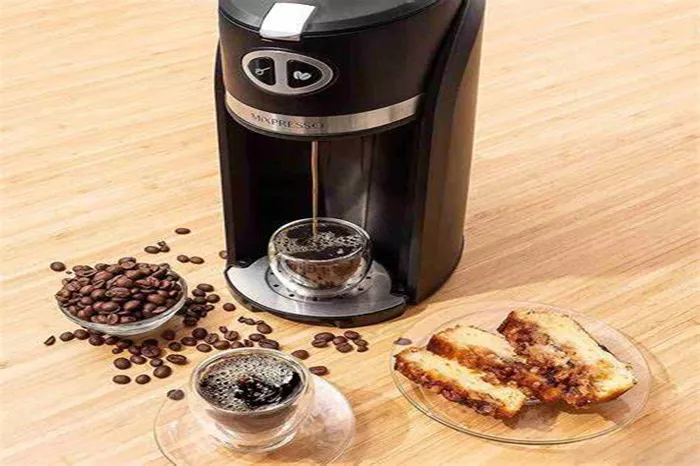Industrial coffee machines are essential for cafes, restaurants, and large-scale coffee production. Keeping them clean ensures great-tasting coffee, prevents machine damage, and maintains hygiene standards. This guide will explain step-by-step how to clean an industrial coffee machine properly.
Why Cleaning an Industrial Coffee Machine is Important
- Better Coffee Taste – Coffee oils and residues build up over time, making coffee taste bitter or stale.
- Longer Machine Life – Mineral deposits (scale) and coffee grounds can damage internal parts.
- Hygiene & Safety – Bacteria and mold grow in dirty machines, which can make customers sick.
- Efficiency – A clean machine works faster and uses energy more efficiently.
Types of Industrial Coffee Machines
Before cleaning, know your machine type:
- Espresso Machines – High-pressure systems with boilers, group heads, and steam wands.
- Filter Coffee Makers (Batch Brewers) – Large machines brewing multiple cups at once.
- Superautomatic Machines – Fully automated, with grinders and milk systems.
- Cold Brew Systems – Specialized for slow extraction at low temperatures.
- Each machine requires slightly different cleaning methods.
Step-by-Step Cleaning Process for Industrial Coffee Machines
Daily Cleaning Routine
Perform these steps every day to keep the machine in good condition.
Cleaning the Portafilter and Group Heads
- Remove the portafilter and knock out used coffee grounds.
- Rinse the portafilter and basket with hot water.
- Use a brush to scrub the group head (where the portafilter locks in) to remove old coffee residues.
- Run water through the group head for 5-10 seconds to flush out loose particles.
Cleaning the Steam Wand
- After frothing milk, purge the steam wand by releasing steam for 2-3 seconds.
- Wipe the wand with a damp cloth immediately to prevent milk from hardening.
- Soak the steam wand tip in warm water if milk has dried on it.
Wiping Down the Machine
- Use a clean, damp cloth to wipe the machine’s exterior.
- Remove any coffee spills or water stains.
- Never use harsh chemicals—they can damage the machine’s surface.
Emptying and Rinsing the Drip Tray
- Remove the drip tray and discard leftover water and coffee grounds.
- Wash it with warm, soapy water and dry it before placing it back.
Weekly Deep Cleaning
Some parts need deeper cleaning once a week.
Backflushing the Espresso Machine (For Models with a 3-Way Valve)
- Use a blind filter (a portafilter basket with no holes) and insert it into the portafilter.
- Add 1-2 teaspoons of espresso machine cleaner (like Cafiza).
- Lock the portafilter into the group head and start a brewing cycle for 10 seconds, then stop.
- Let the cleaner sit for 30-60 seconds.
- Repeat the cycle 3-5 times until the water runs clear.
- Finish by running clean water through the group head to remove any leftover cleaner.
Descaling the Machine
- Mineral deposits (scale) from hard water clog the machine over time.
- Mix a commercial descaling solution with water (follow the product instructions).
- Fill the water reservoir with the solution and run it through the machine.
- Repeat with clean water to rinse out any descaler residue.
Cleaning the Grinder (If Built-In)
- Unplug the grinder for safety.
- Remove leftover coffee beans.
- Use a grinder brush to clean burrs and chambers.
- Wipe with a dry cloth—never use water inside a grinder.
Monthly Maintenance
Some parts need less frequent but thorough cleaning.
Soaking Removable Parts
- Remove shower screens, gaskets, and portafilter baskets.
- Soak them in hot water with a coffee machine cleaner for 15-30 minutes.
- Scrub with a brush, rinse, and reinstall.
Checking Seals and Gaskets
- Inspect rubber gaskets for wear and tear.
- Replace if they are cracked or leaking.
Inspecting Water Filters
If your machine has a water filter, replace it as recommended (usually every 1-3 months).
Special Cleaning for Different Machine Types
Superautomatic Machines
- Follow the manufacturer’s self-cleaning cycle (if available).
- Clean the milk system daily by flushing with warm water and a milk system cleaner.
Batch Brewers (Filter Coffee Machines)
- Clean the brew basket and carafe with soapy water daily.
- Run a vinegar or descaling solution through the machine monthly.
Cold Brew Systems
- Disassemble and clean all parts with mild detergent.
- Sanitize with a food-safe cleaner to prevent bacteria growth.
Common Mistakes to Avoid
- Using Harsh Chemicals – Vinegar can corrode parts; use only coffee machine cleaners.
- Skipping Daily Cleaning – Buildup becomes harder to remove over time.
- Ignoring Water Quality – Hard water causes faster scaling; use filtered water if possible.
- Not Replacing Worn-Out Parts – Old gaskets and seals cause leaks and poor extraction.
Conclusion
Cleaning an industrial coffee machine is essential for great coffee, machine longevity, and customer safety. Follow daily, weekly, and monthly cleaning routines based on your machine type. Always use the right cleaning products and avoid shortcuts. A well-maintained machine ensures consistent, delicious coffee and saves money on repairs.
By following this guide, your industrial coffee machine will stay in top condition, serving perfect coffee every time. Happy brewing!
Related topics:
CEE Enters US and Canada, Eyes ‘Net Zero Coffee Production’
Dune Coffee Roasters: Crafting Exceptional Coffee with Passion and Purpose
Where Are Gevi Coffee Makers Made :A Comprehensive Guide


